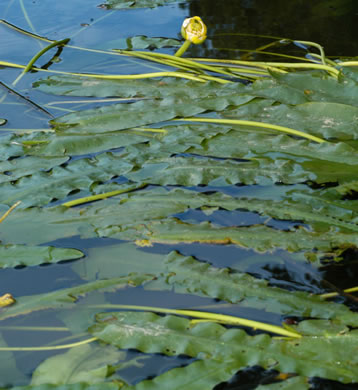Aquatic Plant Growth Habits
reprinted from Field Guide to Aquatic Plants of Alabama by R. Graves Lovell.
Alabama Department of Conservation and Natural Resources, 2007
The first step toward correct identification of an aquatic plant is to observe how it is growing in the water. Understanding the growth habit will also help determine the best method and timing for control, if necessary. Some species may exhibit different growth forms in response to their environment. Furthermore, a plant’s growth form may change during its life cycle. However, aquatic vegetation can be placed in to the following growth forms in which they are most often observed at maturity:
Emersed: Majority of the plant is above the water line and supports itself — sometimes completely out of the water. These plants are usually along the shoreline, but may extend quite a distance from the shore if water depth is very gradual or if they have buoyant structures such as large, hollow stems.
Submersed: Entire plant is usually below the water line unless it becomes “topped-out” in which case some parts of the plant may protrude above the water. Many of these plants can grow in 5 to 10 feet of water depending on visibility.
Floating-Leaved: A rooted plant with most of its leaves floating flat on the surface. A few species have some rigidity and can extend a little above the water line.
Floating: Entire plant is floating.
Filamentous (algae): Simple, rootless plant consisting of clusters of filaments. Can be found growing on the bottom, on objects, or floating. Many genera difficult to identify without microscope.
Planktonic (algae): Microscopic, free-floating plants. May float on surface, forming a visible layer or may suspend below the surface, affecting the color of the water.
Emergent: See emersed.

